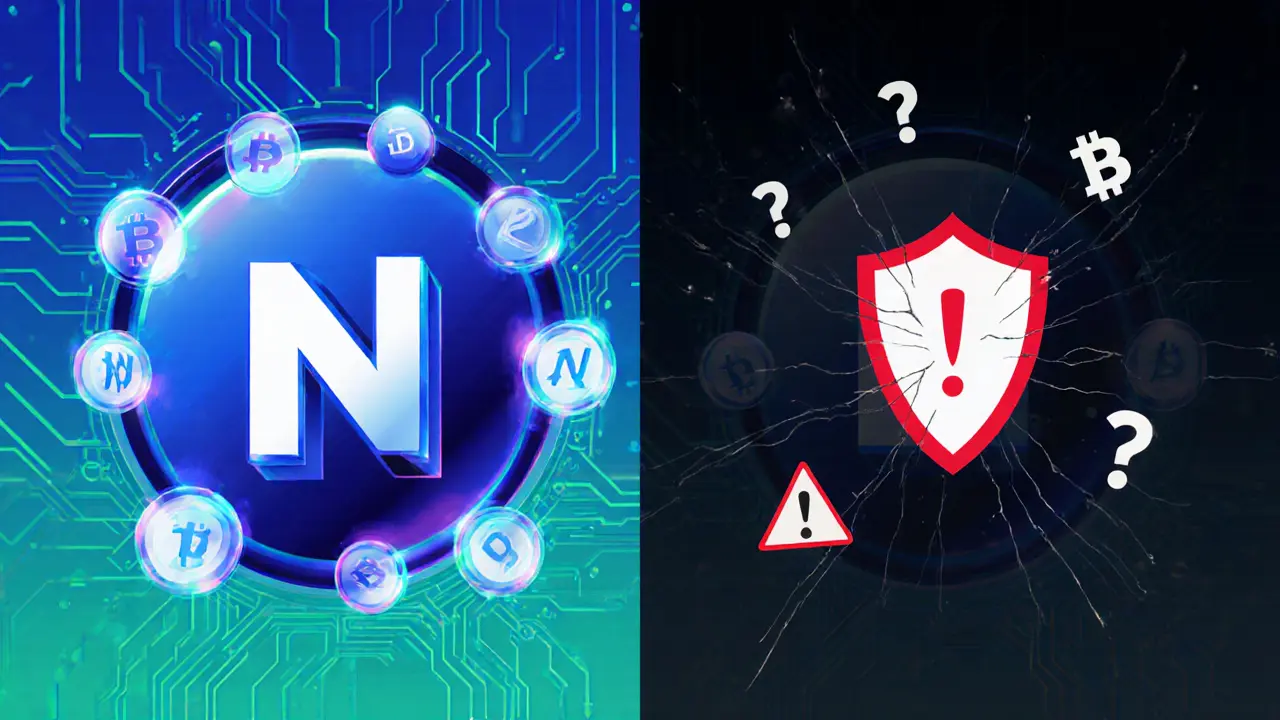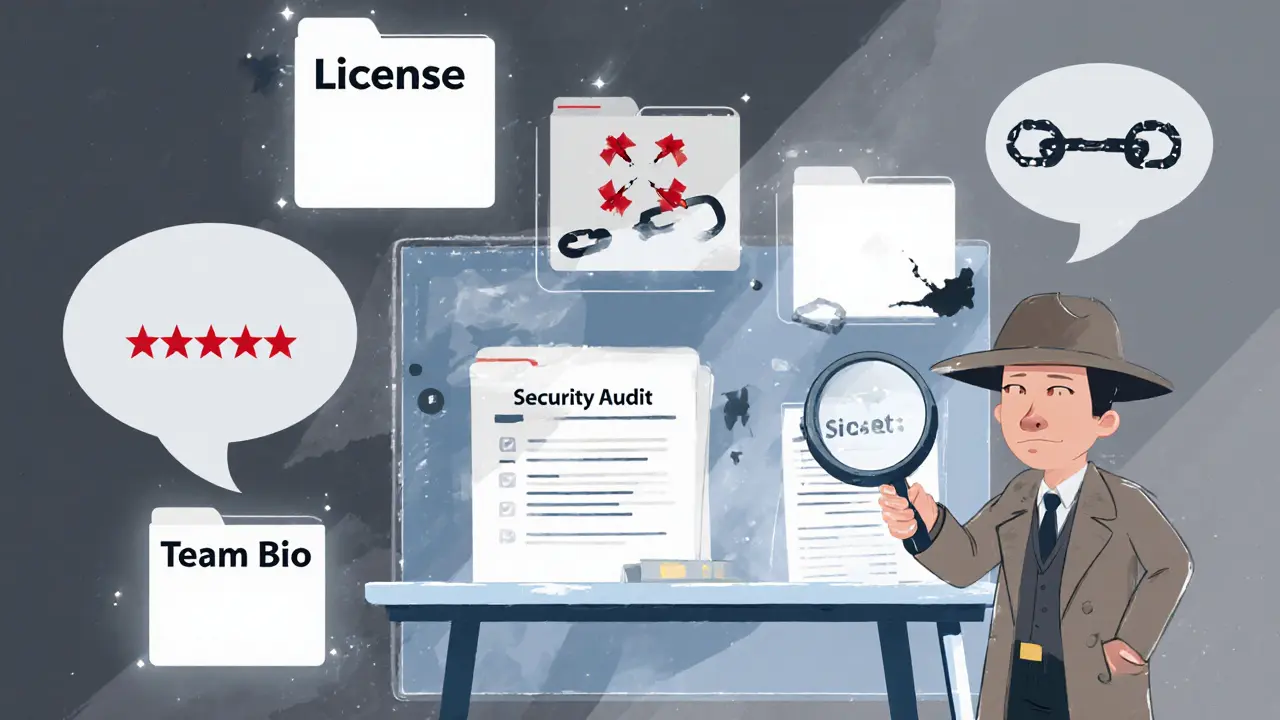Nazadax Crypto Exchange Review: Risks, Red Flags, and How to Stay Safe

Crypto Exchange Safety Checker
Safety Analysis Results
When you hear the name Nazadax a crypto exchange that markets itself as a global trading platform with high liquidity and system stability, you might expect a smooth way to buy, sell, and trade digital assets. The reality, however, is far less reassuring. Below is a deep‑dive into what we could verify, what users are saying, and why the Nazadax crypto exchange raises more warning signs than confidence.
TL;DR
- Nazadax provides scant public information about its founders, licensing, or security measures.
- User reviews on platforms like Revain label it as a likely scam that withholds withdrawals.
- The exchange lacks any known regulatory compliance such as a BitLicense for U.S. users.
- Compared with established services (Binance, Coinbase, Kraken), Nazadax falls short on transparency, security, and user support.
- Stick to regulated, well‑documented exchanges and verify any new platform with multiple independent sources.
What Is Nazadax?
According to its own marketing, Nazadax claims to be a "global digital currency exchange platform" offering high liquidity and a stable trading environment. Beyond that tagline, there are no verifiable press releases, audited financial statements, or detailed technical documentation. The website provides a superficial list of supported cryptocurrencies but omits key data such as fee schedules, order‑type options, or the exact number of trading pairs.
Transparency Gaps and Missing Credentials
Legitimate exchanges publish their corporate registration, jurisdiction, and licensing details. For example, Binance operates under multiple subsidiaries worldwide and holds licenses in regions like Malta and Singapore. Coinbase is a publicly listed company in the U.S. with a NYDFS BitLicense and regular SEC filings, while Kraken maintains a BitLicense for New York residents and publishes annual transparency reports. Nazadax offers none of these assurances. A search for its corporate registration returns no matches, and there is no evidence of a BitLicense, which is the baseline regulatory credential for exchanges handling U.S. customers.
User Feedback: Red Flags Across the Board
Community‑driven review sites are often the first place scammers get exposed. On Revain a blockchain‑focused review platform that aggregates user experiences for crypto services, Nazadax consistently receives 1‑star ratings. Users report deposits disappearing, withdrawal requests being ignored, and customer support offering scripted, unhelpful responses. One reviewer summed it up: "A scam project that faked people and went away with their money." Such language appears across multiple independent testimonies, indicating a pattern rather than isolated incidents.
Regulatory Landscape: Why Licensing Matters
In 2025, regulators around the globe have tightened oversight of crypto intermediaries. In the United States, the New York Department of Financial Services (NYDFS) requires a BitLicense for any platform that offers services to New York residents. The BitLicense mandates capital requirements, robust AML/KYC procedures, and regular security audits. Outside the U.S., the European Union’s MiCA framework imposes similar transparency and consumer‑protection obligations.
Unlike Binance, Coinbase, or Kraken, Nazadax does not list any of these licenses. The absence suggests the platform either does not meet regulatory standards or operates in jurisdictions where oversight is lax, both of which increase user risk.

Security Practices-or the Lack Thereof
Secure exchanges employ multi‑signature cold storage for the bulk of user funds, regular third‑party security audits, and encryption standards such as TLS1.3. For instance, Binance stores about 95% of assets in offline wallets and publishes annual audit summaries. Cold storage refers to offline wallets that keep private keys away from internet exposure, drastically reducing hacking risk and multi‑signature requires multiple private keys to authorize a transaction, adding an extra layer of protection are standard industry practices.
Nazadax provides no public proof of such safeguards. No audit reports, no cold‑wallet percentages, nothing about multi‑signature implementations. In the world of digital assets, this omission is a major red flag because it means users cannot verify that their funds are protected against theft or mismanagement.
Side‑by‑Side Comparison
| Exchange | Regulatory License | Security Measures | Fee Structure (taker) | User Rating (out of 5) |
|---|---|---|---|---|
| Binance | Multiple global licenses (e.g., Malta, Singapore) | Cold storage 95%, 2‑FA, regular audits | 0.04% | 4.5 |
| Coinbase | NYDFS BitLicense, SEC‑registered | Cold storage 98%, multi‑sig, SOC2 | 0.50% | 4.2 |
| Kraken | BitLicense, EU MiCA compliance | Cold storage 95%, multi‑sig, annual audit | 0.16% | 4.1 |
| Nazadax | None publicly disclosed | Undocumented; no evidence of cold storage or multi‑sig | Unclear; no transparent fee table | 1.0 (based on Revain) |
Safer Alternatives for 2025 Traders
If you’re looking for a reliable place to trade, stick with exchanges that publish clear documentation, hold recognized licenses, and have a track record of security. Binance, Coinbase, and Kraken all meet these criteria, and newer entrants like OKX offers robust custodial solutions and has secured multiple regulatory approvals across Asia and Europe are also worth considering.
When evaluating a new platform, ask yourself the following checklist:
- Does the exchange list its corporate registration and jurisdiction?
- Is there evidence of a BitLicense, MiCA compliance, or equivalent?
- Are security details (cold storage % and multi‑sig usage) publicly available?
- Can you find independent reviews from reputable sites (e.g., CryptoCompare, Revain, Trustpilot)?
- Is customer support reachable via multiple channels and responsive?
If the answer is “no” to most of these, walk away.
How to Spot Potential Scam Exchanges
Scammers often mimic the branding of legitimate services-notice the similarity between Nazadax and the unrelated "Nasadex.com" that was flagged in 2024 as a fraudulent platform. Common tactics include:
- Promised high returns with little to no risk.
- Urgent “limited‑time” offers that pressure you to deposit quickly.
- Absence of verifiable leadership or team bios.
- Unclear fee structures; sometimes fees are hidden until after deposit.
- Social media hype driven by paid influencers rather than organic community growth.
Cross‑checking the domain WHOIS record, looking for security certificates (HTTPS, SSL grade), and searching for any regulatory warnings (e.g., FINCEN, FCA) can save you from loss.
Final Takeaways
Nazadax’s lack of transparency, missing regulatory credentials, undocumented security practices, and overwhelmingly negative user feedback make it a high‑risk choice for any trader. In a market where reputable exchanges continuously improve compliance and security, there’s little reason to gamble on a platform that offers none of these fundamentals.
Choose an exchange that openly shares its licensing status, publishes security audits, and has a solid reputation across multiple independent sources. By doing so, you protect your capital and stay on the right side of an increasingly regulated crypto landscape.
Frequently Asked Questions
Is Nazadax a licensed crypto exchange?
No public records show that Nazadax holds a BitLicense, MiCA approval, or any other recognized regulatory credential. This absence is a major red flag.
Can I safely withdraw funds from Nazadax?
User reports on Revain consistently state that withdrawal requests are ignored or delayed indefinitely, suggesting that withdrawals are not reliable.
How does Nazadax’s security compare to Binance or Coinbase?
Unlike Binance and Coinbase, which disclose cold‑storage percentages, multi‑signature usage, and regular audit reports, Nazadax provides no security documentation at all.
What should I do if I’ve already deposited on Nazadax?
First, attempt to contact support through all available channels and document every response. If no resolution, consider filing a complaint with your local consumer protection agency and, if applicable, with the regulator in the jurisdiction where the exchange claims to operate.
Are there any reputable alternatives for new traders in 2025?
Yes. Exchanges like Binance, Coinbase, Kraken, and OKX meet regulatory standards, publish security audits, and have strong community reviews. They also offer educational resources for beginners.

16 Comments
Ever notice how every new crypto platform that pops up out of nowhere seems to have a hidden agenda? The moment they claim 'global liquidity' and 'stable trading', the red flags start blinking. There’s a pattern of these services slipping through regulatory cracks, masquerading as legit while the owners stay invisible. In the case of Nazadax, the lack of any public license reads like a deliberate omission, not an oversight. Regulators have been tightening the noose around shady exchanges, yet some still operate in the shadows of offshore havens. The absence of a BitLicense, MiCA compliance, or any recognized credential suggests they are either too small to qualify or too reckless to care. User testimonies on platforms like Revain echo each other, describing vanished deposits and ghosted support tickets. When a service consistently refuses withdrawals, you’re not dealing with a technical glitch but a financial trap. Cold storage percentages and multi‑signature audits are industry standards; their omission is a dead giveaway of weak security. If you can’t verify where your crypto is stored, you might as well hand over your keys to the wind. Scam operators often flaunt high‑yield promises, but the real profit they seek is the initial influx of capital. They rely on the hype cycle, using paid influencers to create a veneer of legitimacy. Once the hype dies down, the exchange disappears, leaving investors with empty wallets. The best defense is to stick with exchanges that publish their jurisdiction, licensing, and audit reports in plain sight. In short, treat any platform without transparent credentials as a high‑risk gamble, not a safe haven.
I see, however, that many of these claims, while sounding impressive, lack the essential documentation; consequently, investors should remain vigilant, especially when no license is disclosed.
Man, diving into these exchange reviews feels like wandering through a neon‑lit maze where every corner promises treasure but often hides a pitfall.
The hype train rolls fast, yet the tracks are seldom inspected for safety.
So, keep your eyes peeled and your wallet guarded.
The architecture described in their whitepaper is nothing but a re‑hashed liquidity pool construct, lacking any verifiable custody proofs, which indicates a classic front‑running risk vector.
I get why people are curious about new platforms, but it’s always wise to double‑check the basics before tossing money in.
yOu knoW, i thnik its realiey risky to trust a site whO wont show any certifcates.
From a risk‑management perspective, the missing regulatory info alone should raise concerns.
Agreed, the absence of a clear audit trail makes it hard to assess operational soundness, which is a fundamental criteria for any trader.
One cannot help but observe the uncanny resemblance between the promotional rhetoric of Nazadax and the age‑old stratagems employed by shadow‑operatives within the cryptoverse, a phenomenon that surely warrants deeper epistemological scrutiny.
That sounds like a red flag.
Honestly, I think the hype around Nazadax is just market noise and not worth the hassle.
Nevertheless, one must consider the ontological implications of participating in an ecosystem bereft of regulatory scaffolding, for such neglect may precipitate a systemic erosion of fiduciary trust.
Oh great, another exchange promising miracles-because that’s never failed before, right?
Maybe they’ll surprise us and actually deliver on their promises.
Looks like another overhyped platform with zero substance, just more buzzwords.
Yeah, sounds typical.